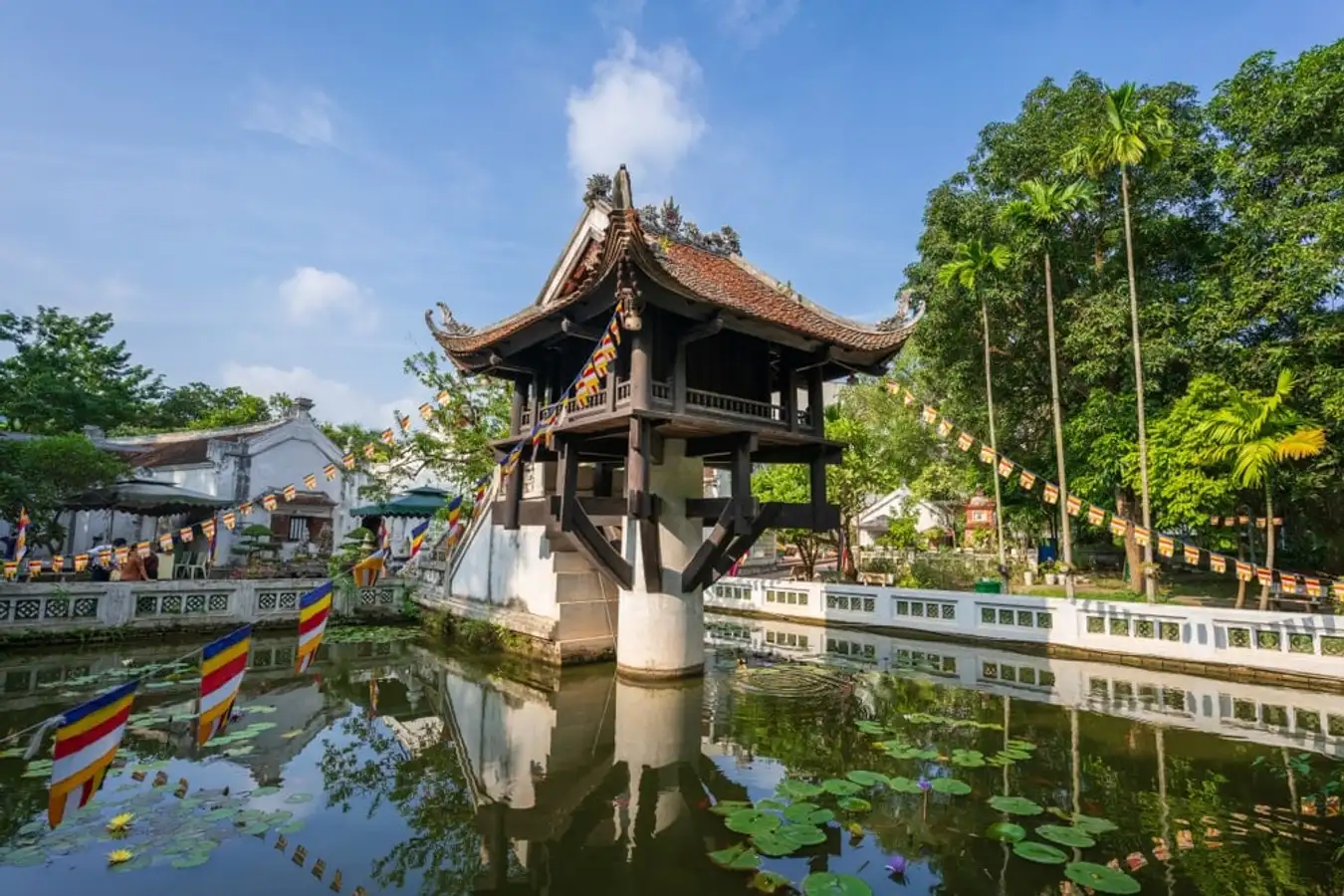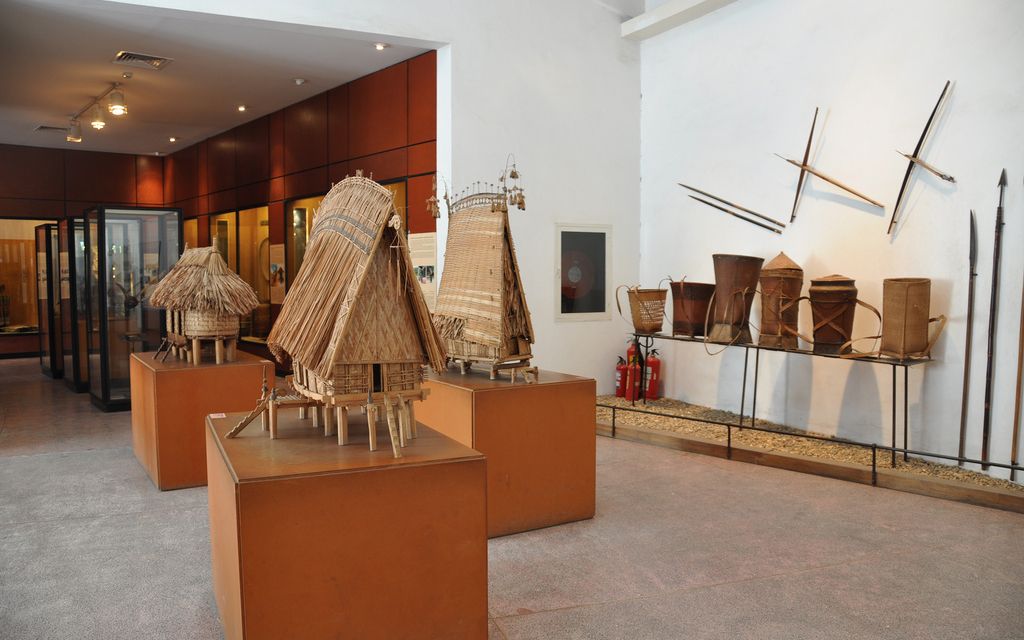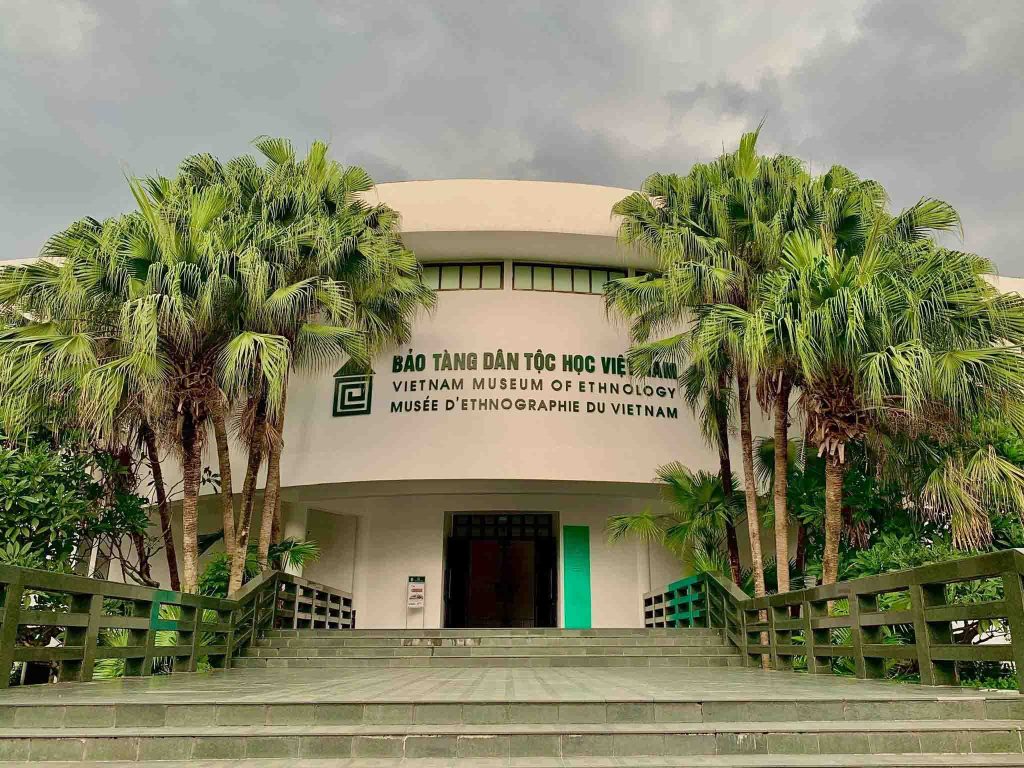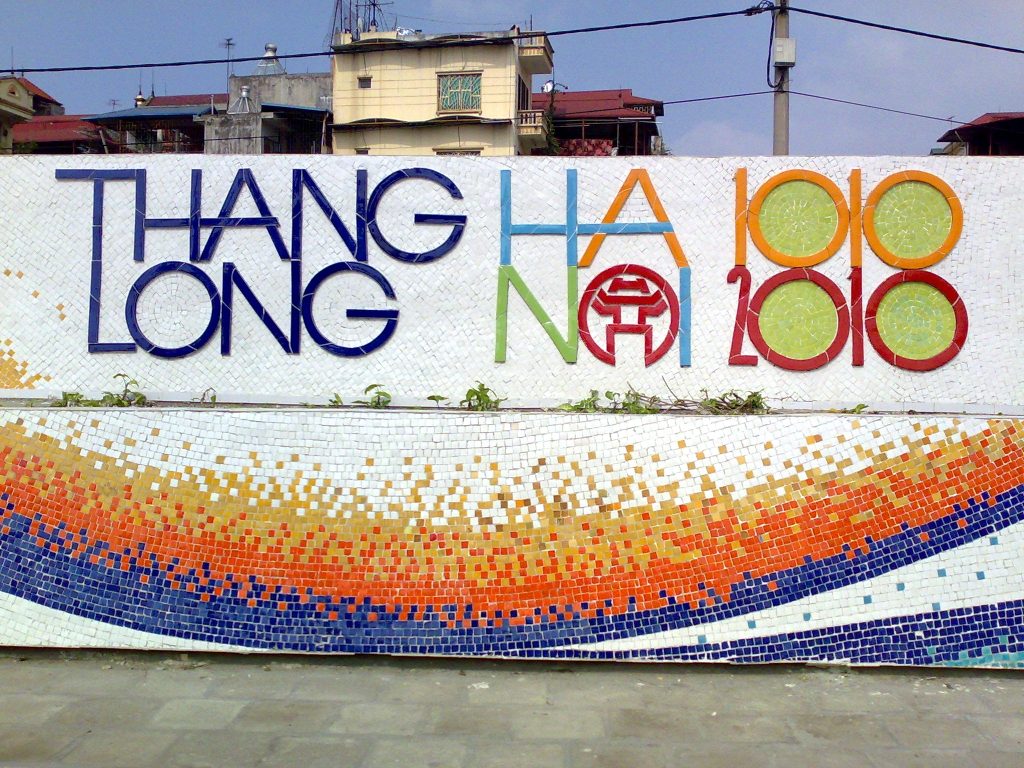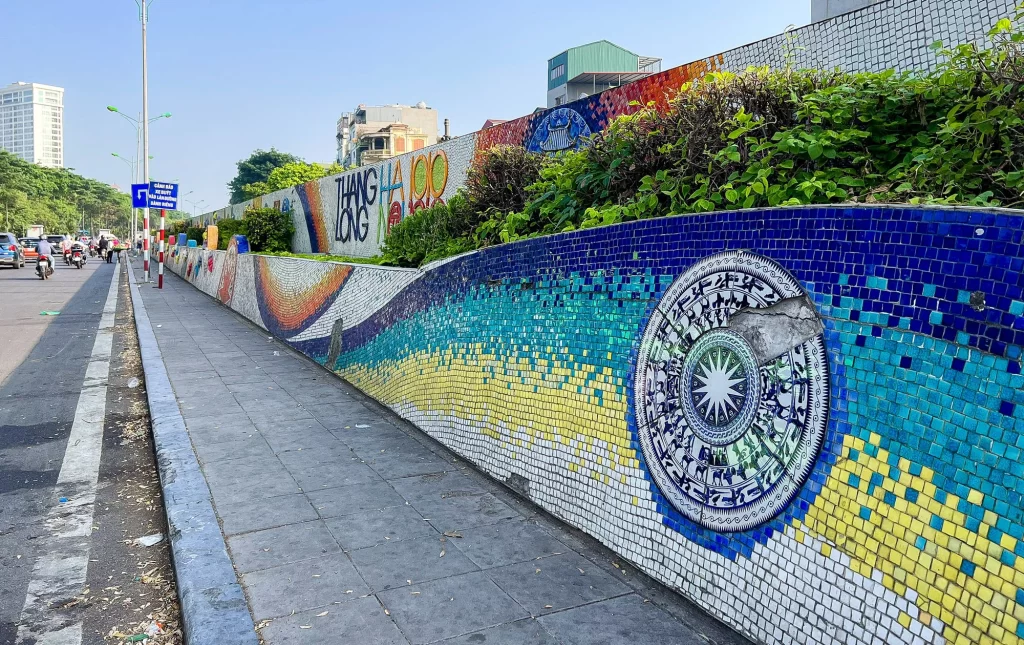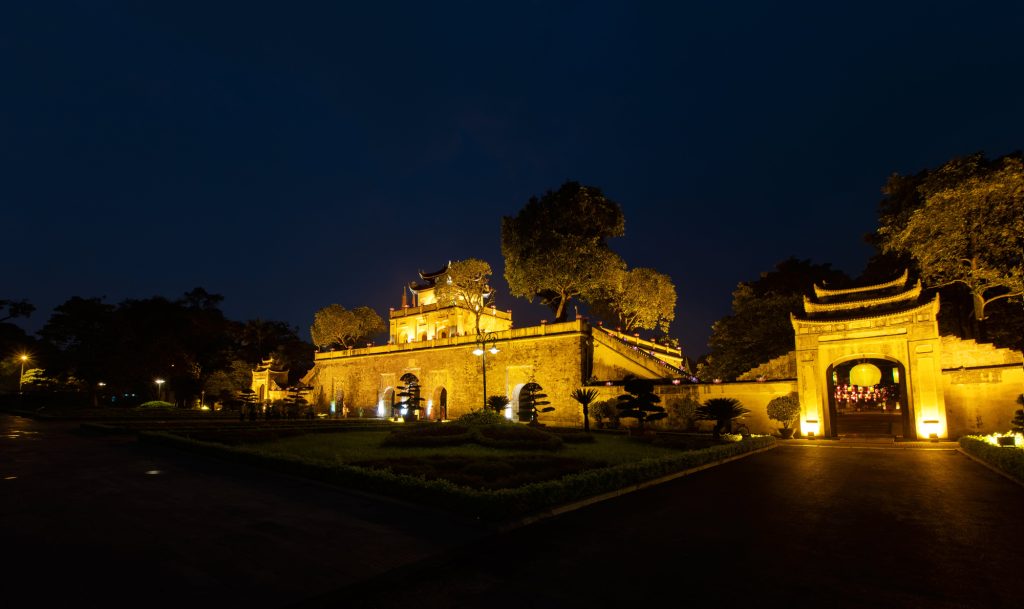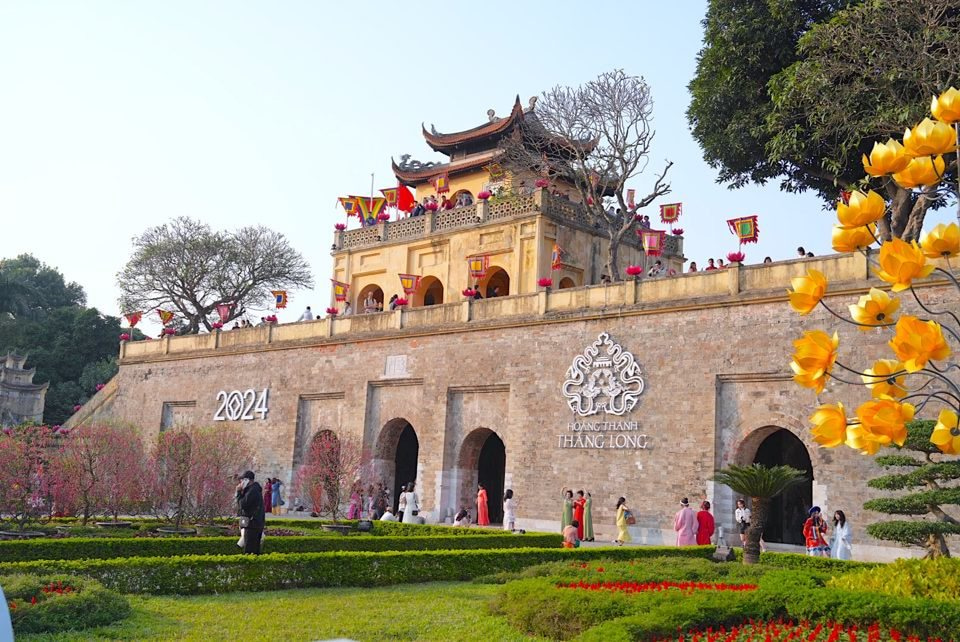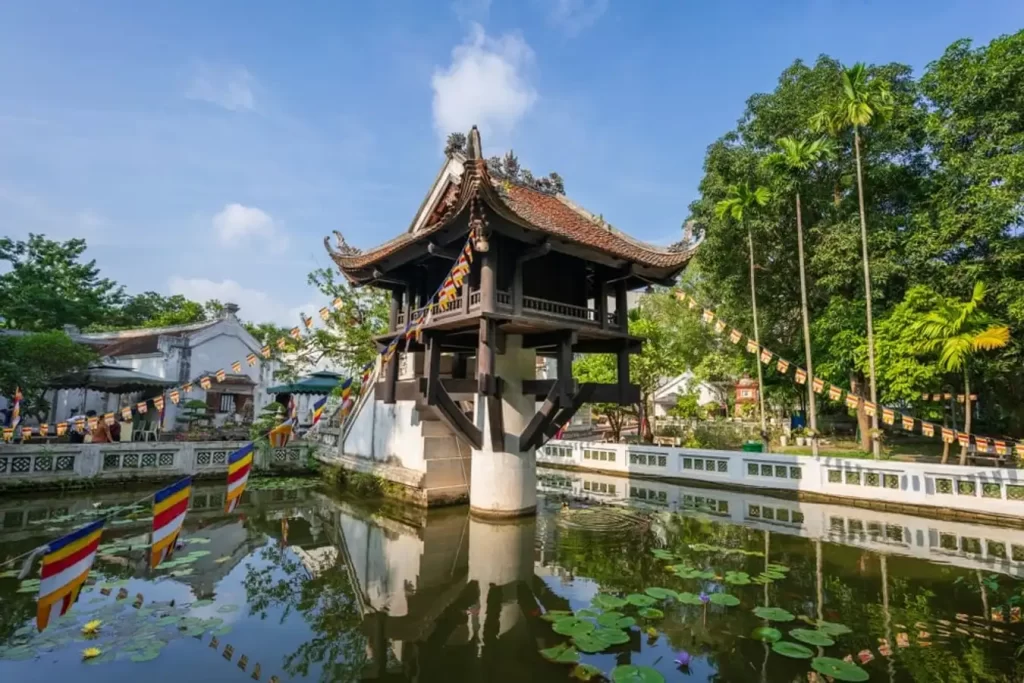Exploring Hanoi's Treasures: The One Pillar Pagoda
Uncover the timeless allure of the One Pillar Pagoda in Hanoi. Admire its iconic architecture, steeped in centuries of history and spirituality. Surrounded by serene gardens, it's a tranquil oasis inviting exploration and contemplation amid the city's vibrant energy.
Location: One Pillar Pagoda Ward, Doi Can, Ba Dinh, Hanoi, Vietnam (click here to open google map)
The long history of the one-pillar pagoda
The One Pillar Pagoda in Hanoi boasts a rich and storied history dating back to the 11th century. Constructed by Emperor Ly Thai Tong in 1049, the pagoda's creation is steeped in legend. According to historical accounts, the emperor had a dream in which he was granted a vision of the Bodhisattva Avalokiteshvara seated on a lotus blossom. This divine vision inspired him to build the pagoda, symbolizing his gratitude for the birth of his son, as the Bodhisattva was believed to have blessed him with an heir.
Throughout the centuries, the One Pillar Pagoda has faced numerous challenges, including destruction and subsequent reconstructions. Despite these adversities, it has remained an enduring symbol of Vietnamese spirituality and cultural heritage, reflecting the resilience and devotion of the Vietnamese people.

Some unique architecture of one-pillar pagoda
The One-Pillar Pagoda, known locally as Chua Mot Cot, is a historic and architecturally unique structure located in Hanoi, Vietnam. Renowned for its distinctive design, the pagoda is an emblematic feature of Vietnamese culture and spirituality.
1. Lotus Flower Design
The One-Pillar Pagoda’s design is directly inspired by the lotus flower, a significant symbol in both Vietnamese culture and Buddhism. This iconic structure is constructed to resemble a lotus blossom emerging from the water, symbolizing purity and enlightenment.
Elevated above a lotus pond, the pagoda is supported by a single, central pillar that plunges into the water below, representing the stem of the lotus flower. The roof of the pagoda is adorned with red brick scale tiles and features four gracefully curved corners. At the pinnacle of the roof, the exquisitely carved "double dragon adoring the moon" motif symbolizes harmony and protects the sacredness of the pagoda.
Beyond its religious symbolism, the Lotus Flower Design reflects the deep appreciation and respect for nature in Vietnamese culture. It embodies the harmony between humans and their natural environment, expressing a philosophy of living that is close to nature and guided by its cycles and rhythms. The structural design, combined with the surrounding water body, makes the Lotus Flower Design not just a visual marvel but a holistic, interactive experience.
Visitors approaching the pagoda experience the unique sensation of moving towards a 'blossoming' structure, fostering a deeper connection with its symbolic meanings. This enchanting journey invites reflection and offers a profound understanding of the cultural and spiritual significance of the One-Pillar Pagoda, making it a must-visit landmark in Hanoi.
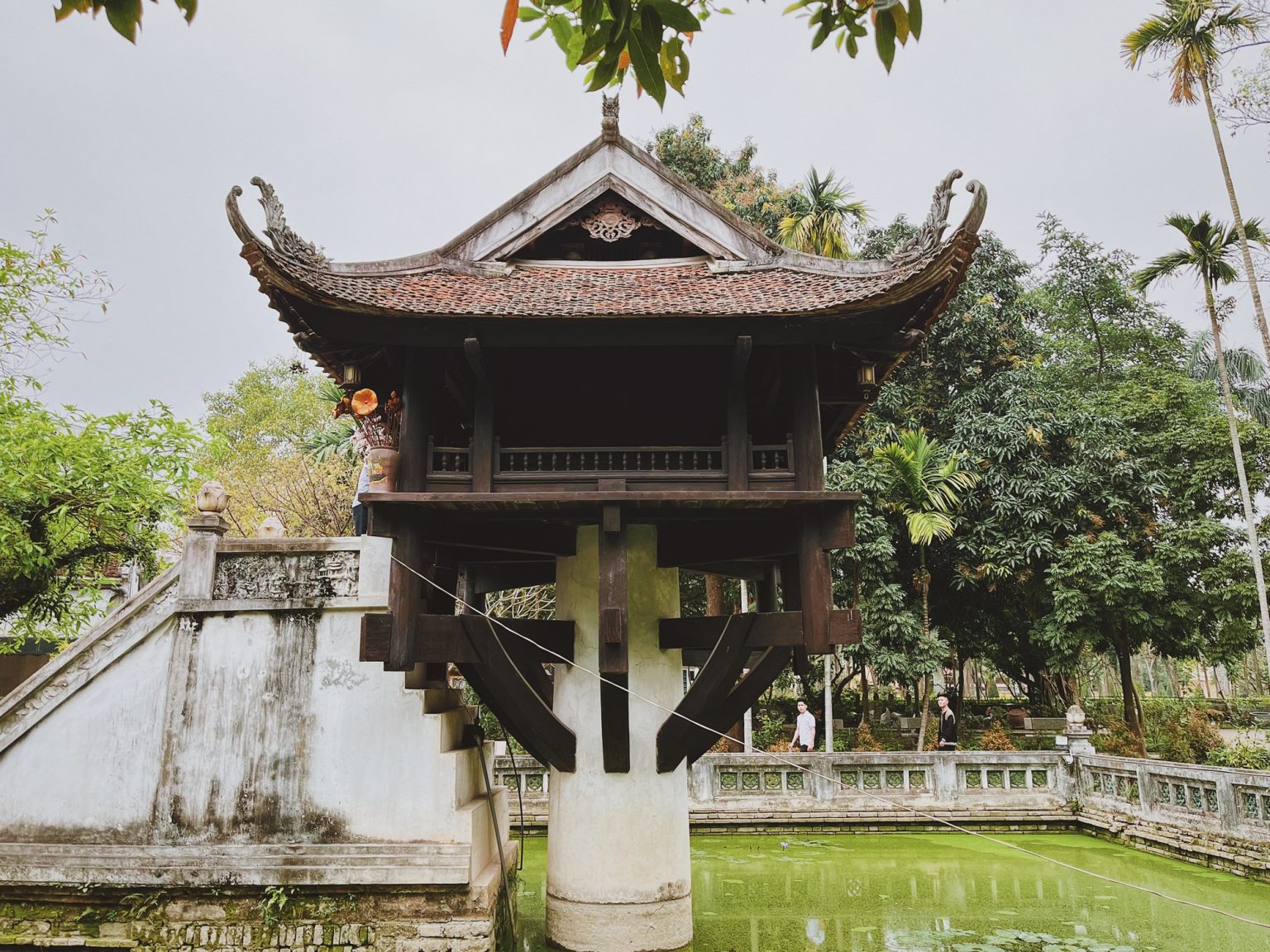
2. Three-arched-entrance Gate (Tam Quan Gate)
Within the serene campus of the One Pillar Pagoda stands the impressive Three-Arched-Entrance Gate, known locally as Tam Quan Gate. This architectural marvel prominently features a horizontal painting inscribed with the words "Dien Huu Pagoda." True to its name, the Tam Quan Gate is composed of three distinct arches. The central arch, typically the largest, is often reserved for monks, nuns, and ceremonial use during significant religious events. The two smaller side arches are intended for laypeople and everyday use.
In Buddhist symbolism, gates are often seen as representations of the path to enlightenment. The three arches of the Tam Quan Gate symbolize the Three Jewels of Buddhism: the Buddha, the Dharma (Buddha's teachings), and the Sangha (the monastic community). During special occasions and festivals, the gate is beautifully adorned with elaborate decorations, lanterns, and banners featuring sacred symbols and calligraphy, enhancing its spiritual ambiance.
The Tam Quan Gate is more than a mere entrance; it is an architectural statement that encapsulates key philosophical and religious principles of Vietnamese culture. Its structural grandeur marks the threshold to a realm of spirituality, setting the stage for the contemplation and reverence that visitors experience within the temple grounds. The presence of this gate not only adds to the aesthetic beauty of the One Pillar Pagoda complex but also underscores the profound spiritual journey that awaits those who pass through its arches.
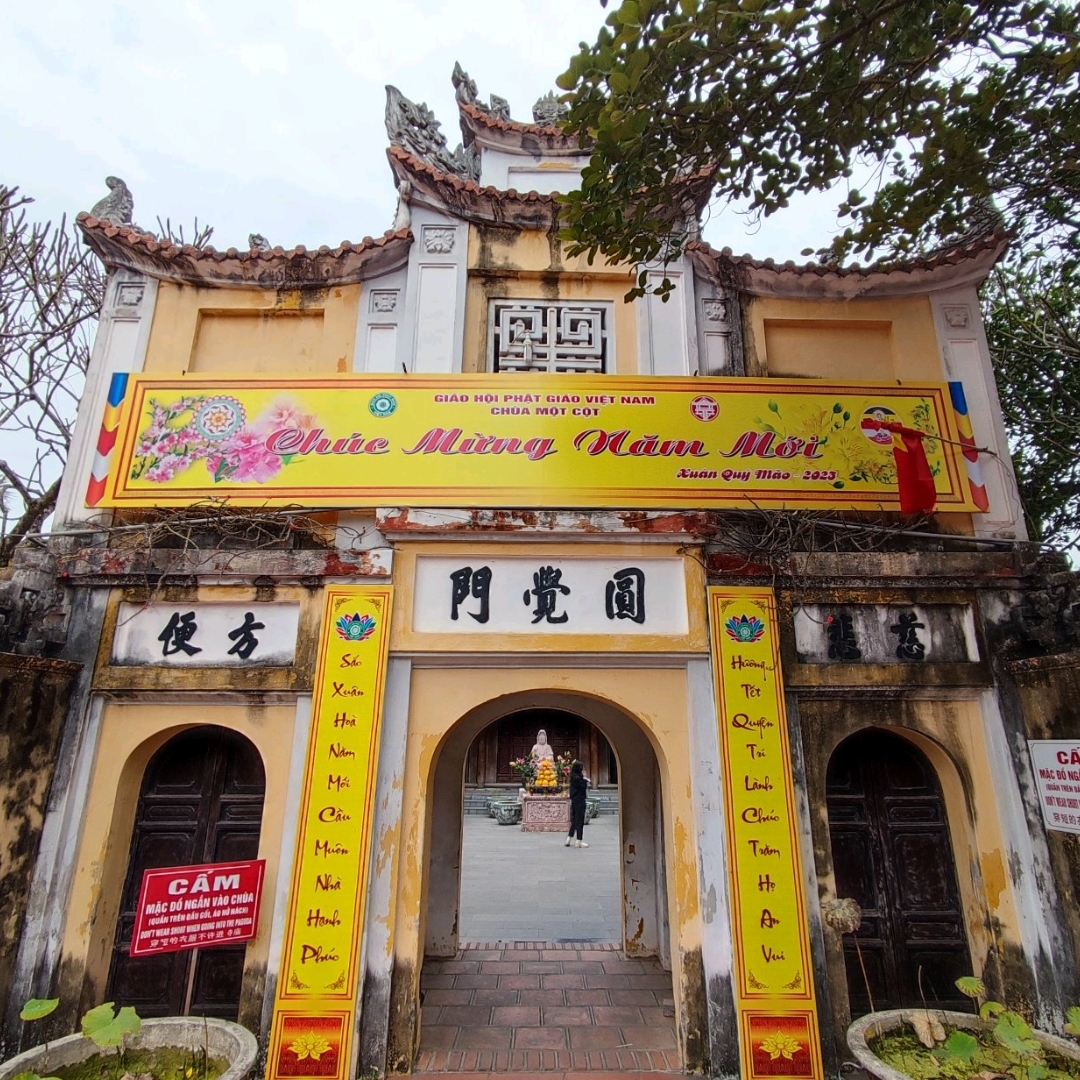
3. The stairs leading to the main hall
The stairs leading to the main hall of the One Pillar Pagoda are an integral part of its symbolic and aesthetic design. Though simple in construction, these stairs play a crucial role in the overall experience of visiting the pagoda, representing the ascension to a place of respect and worship. The act of climbing these stairs is metaphorically seen as ascending towards enlightenment or higher wisdom, mirroring the spiritual journey that practitioners of Buddhism aim to undertake.
To reach the main hall of Lien Hoa Dai, visitors must ascend 13 steps, each about 1.4 meters wide. These steps, built during the Ly Dynasty, have retained their historic architecture. While the number 13 is often associated with bad luck in Western culture, in Eastern culture, it symbolizes fertility and prosperity. Thus, the 13 steps of the One Pillar Pagoda are seen as bestowing blessings upon pilgrims, enhancing their spiritual journey.
Another highlight of the One Pillar Pagoda complex is the Bodhi tree, gifted by the President of India, Rajendra Prasad, during President Ho Chi Minh's visit to India in 1958. This tree symbolizes the enduring friendship between Vietnam and India, reflecting the deep cultural and spiritual connections shared by the two nations. The presence of the Bodhi tree, alongside the historic steps and the iconic pagoda, enriches the spiritual atmosphere, inviting visitors to contemplate the profound significance of these symbols and their interconnectedness.
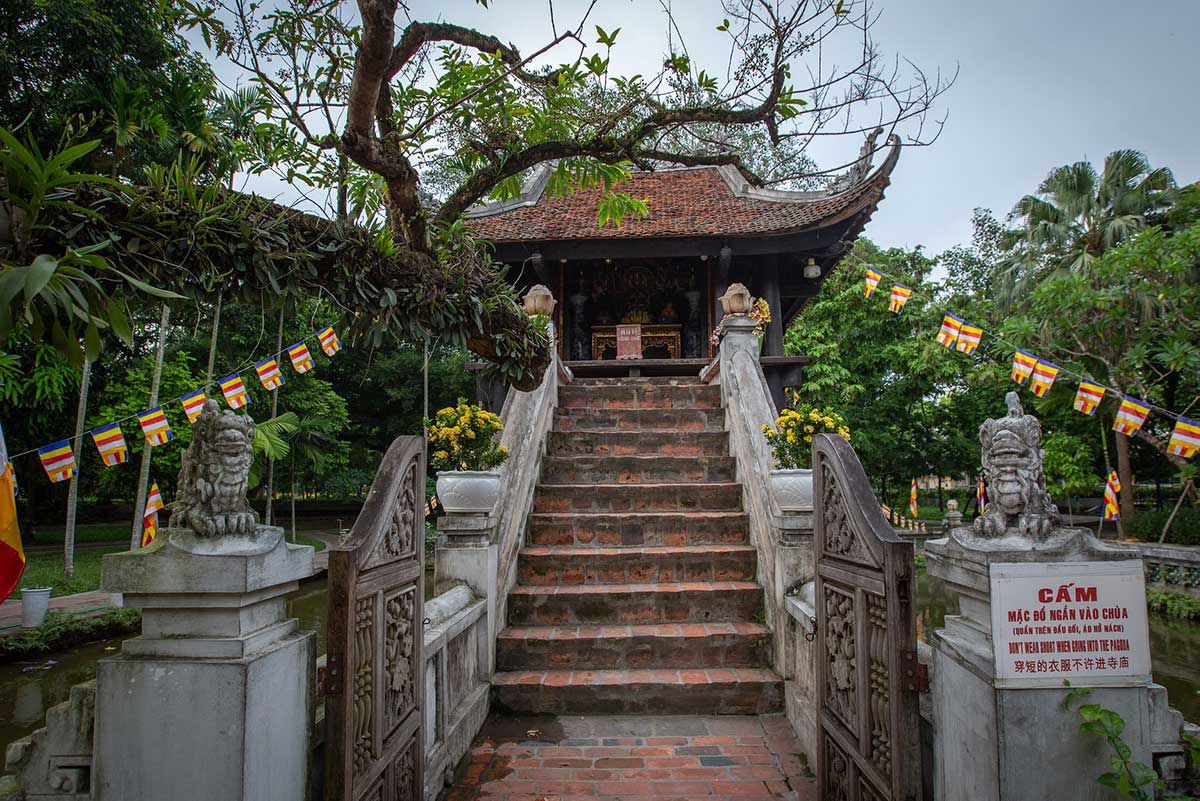
4. Small Inner Shrine
The inner shrine of the One Pillar Pagoda, though relatively small, creates a cozy and personal atmosphere for devotees and visitors alike. At the heart of the shrine is an altar, typically holding a statue or an idol representing a significant figure in Buddhism, often the Avalokiteshvara Bodhisattva, who is associated with compassion. This central figure is a focal point for prayer and meditation, inviting visitors to engage in moments of reflection and devotion.
The shrine is adorned with various artistic elements, including intricate wood carvings, religious iconography, and calligraphy. These decorative touches not only enhance the shrine's aesthetic appeal but also convey profound messages of faith and philosophy integral to Buddhism. Each element within the shrine is thoughtfully placed to inspire a sense of peace, reverence, and spiritual connection.
In essence, the small inner shrine at the One Pillar Pagoda is not merely a physical space but also a symbolic one, resonating deeply with the spirituality and intentions of those who seek solace within its walls. It stands as a testament to the depth of Buddhist belief and the enduring cultural legacy of Vietnam, offering a sanctuary where visitors can connect with the rich traditions and spiritual heritage that the pagoda embodies.

Some instructions for tourists when coming to the One Pillar Pagoda.
Entrance Fee
Vietnamese citizens enjoy free admission when visiting the One Pillar Pagoda. For foreign visitors, the entrance fee is 25,000 VND per person.
Opening Hours
The One Pillar Pagoda is located within the Ho Chi Minh Mausoleum complex, so its opening hours are aligned with the rest of the area. Visitors can explore this unique temple daily from 7 a.m. to 6 p.m.
Visit the One Pillar Pagoda
Whether you're a local or an international traveler, the One Pillar Pagoda offers a unique glimpse into Vietnam's rich cultural and spiritual heritage. Plan your visit to experience the serene beauty and historical significance of this iconic landmark in Hanoi.
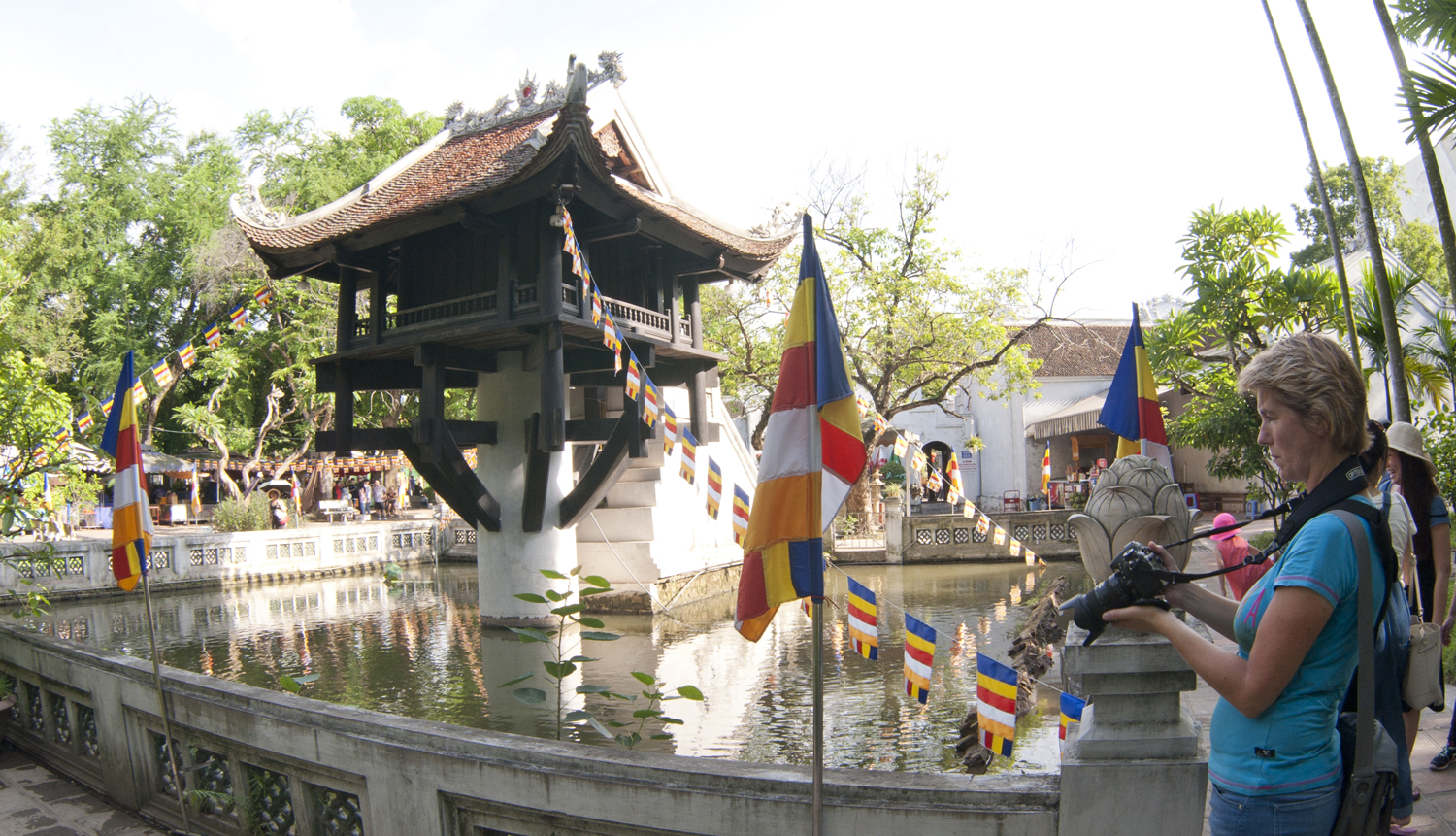
1. Before Arriving
2. During the Visit
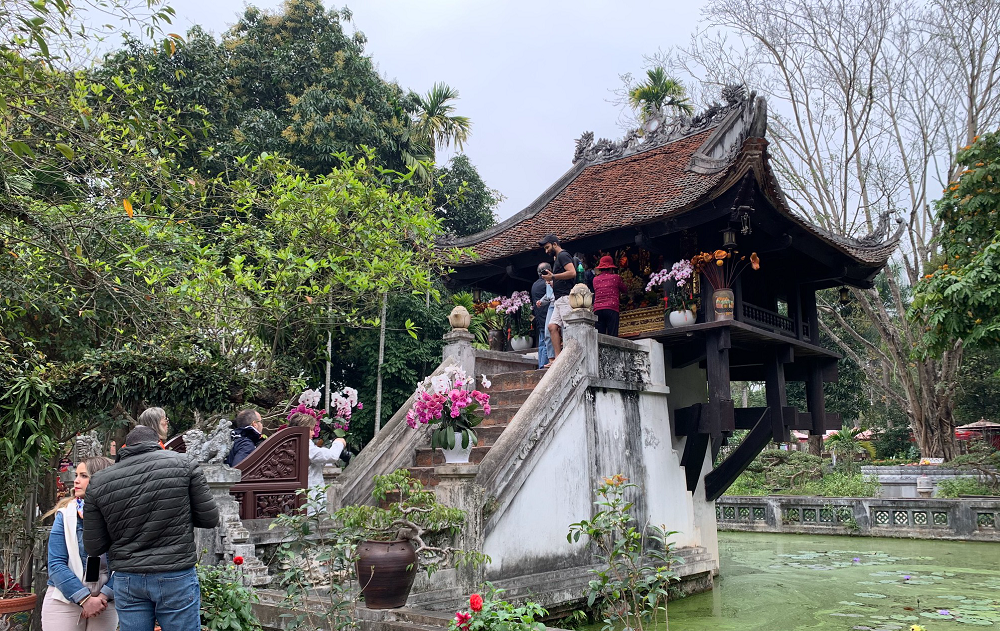
3. After your visit
Reflect on Your Experience: Set aside some time after your visit to the One Pillar Pagoda to reflect on the experience. Consider the architecture, the rituals observed, and any new insights you may have gained about Vietnamese culture and Buddhism. Reflecting on your visit can deepen your understanding and appreciation of the spiritual and cultural significance of the pagoda.
Share Respectfully: If you choose to share your experience or photos of the One Pillar Pagoda, do so respectfully. Be mindful of the cultural and religious significance of the site and avoid posting anything that could be considered disrespectful or misrepresentative. Sharing your experience in a respectful manner honors the traditions and values associated with the pagoda.
By following these guidelines, you not only ensure a respectful visit but also contribute to the preservation of the spiritual and cultural heritage of the One Pillar Pagoda. Your thoughtful approach will enhance your own appreciation and understanding of this unique site, as well as respect the beliefs and practices of others.
4. How to get to One Pillar Pagoda in Hanoi?
By Motorbike or Car:
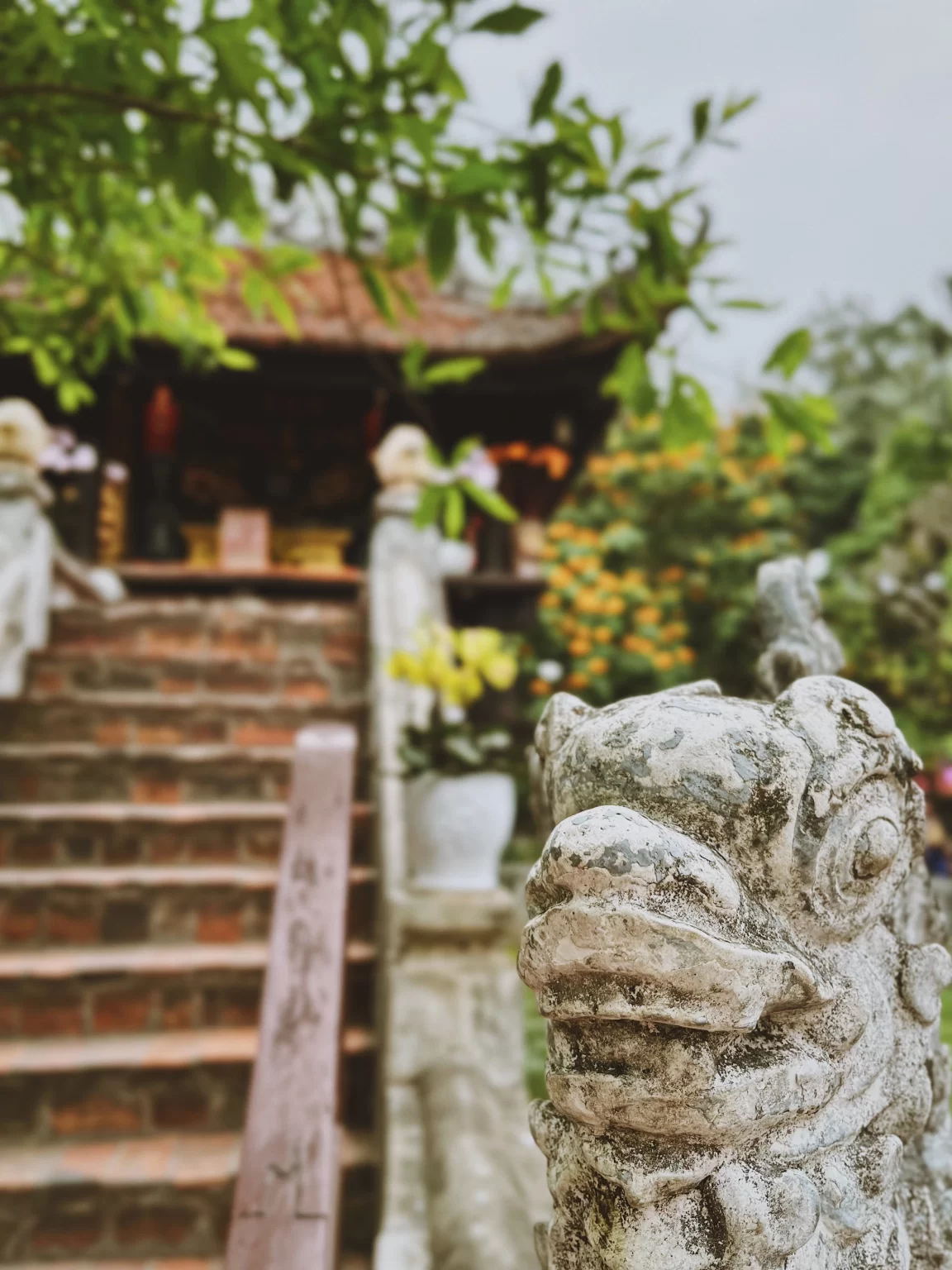
5. Beautiful places near the temple that you should not miss
In addition to the thrill that One Pillar Pagoda brings, tourists can explore other tourist attractions in Hanoi such as:

